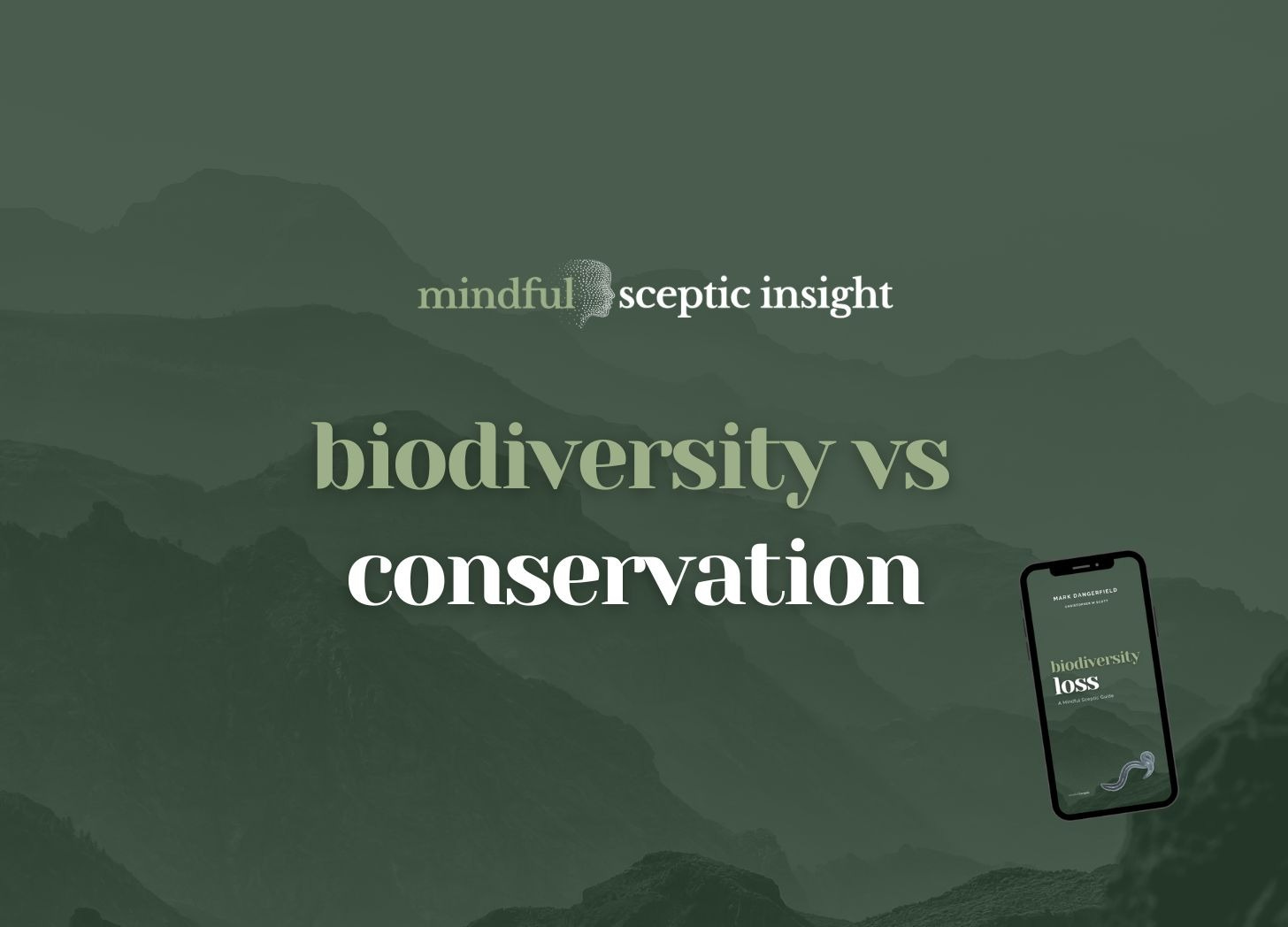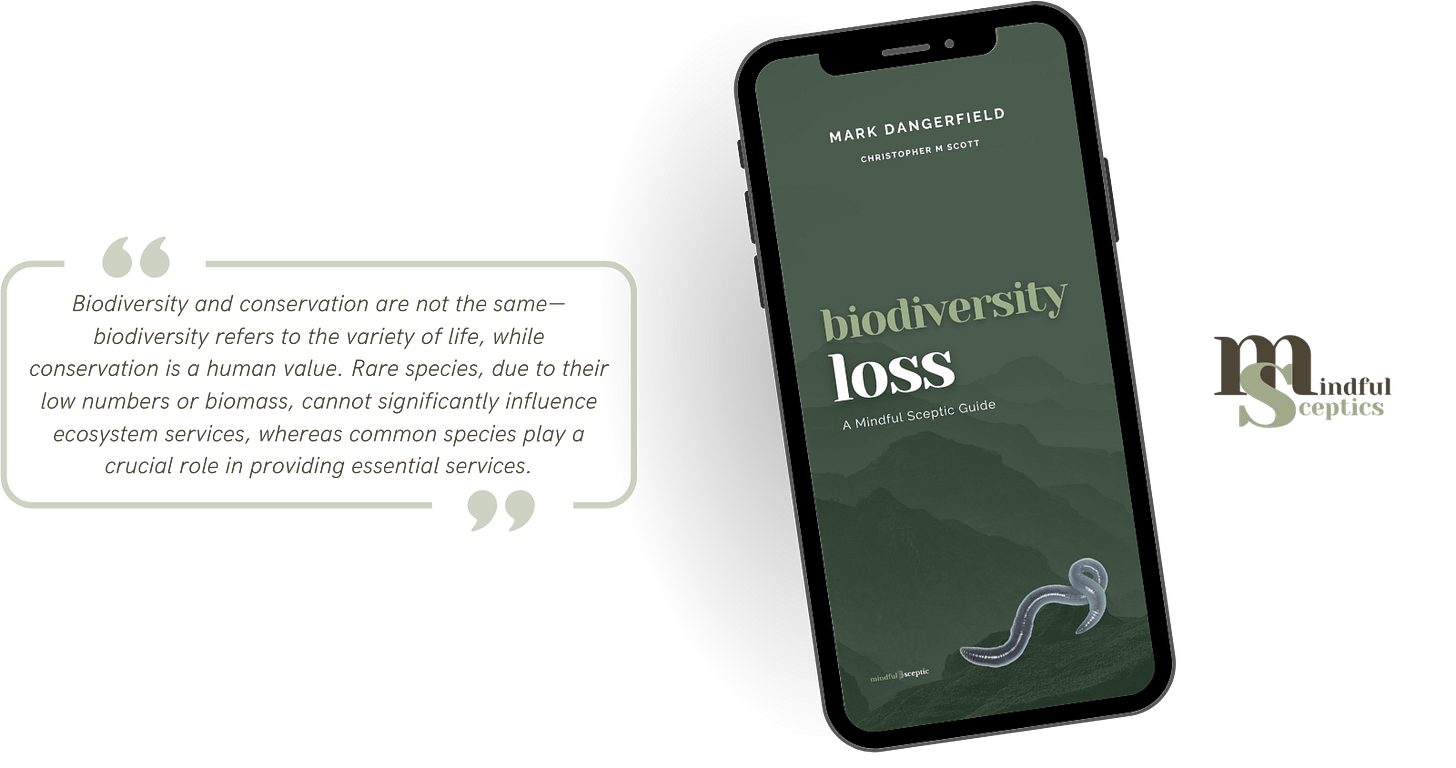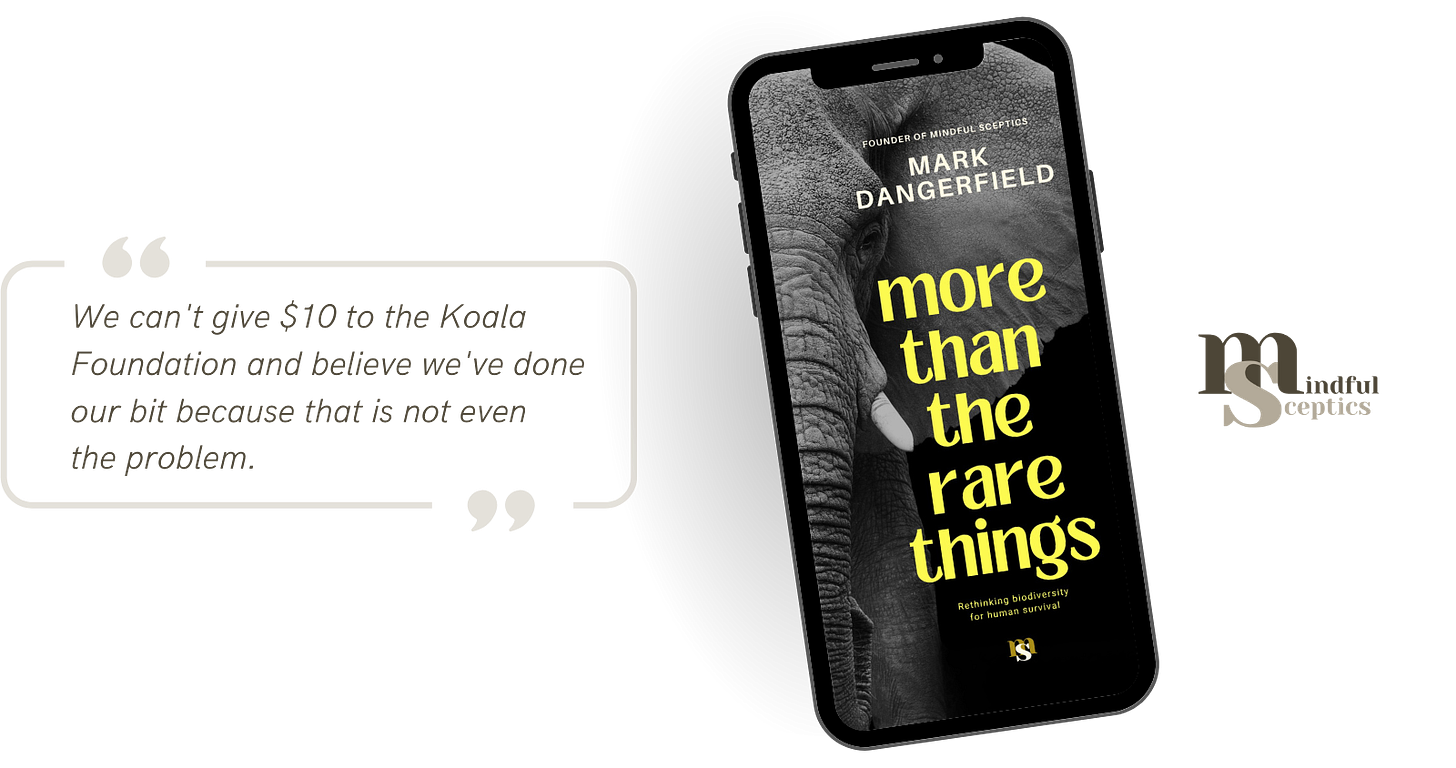The environmental movement has engaged in one of modern discourse’s most successful conceptual heists, stealing a precise scientific term and turning it into a fundraising slogan.
When conservationists claim they’re “protecting biodiversity,” they’re perpetuating a fundamental category error that weakens both science and environmental policy.
Core Idea
Walk into any environmental conference or browse any conservation website, and you’ll encounter the seamless conflation of biodiversity and conservation as if they were synonymous.
The language is everywhere… “biodiversity conservation,” “protecting biodiversity,” “biodiversity crisis” appear as linguistic sleight-of-hand that has become so pervasive that challenging it feels like heresy.
Yet this conflation represents one of the environmental movement’s biggest and crucial intellectual failures.
It is an error that damages both scientific truth and effective environmental action.
When the 1992 Convention on Biological Diversity defined biodiversity as “the variability among living organisms from all sources,” it provided a clear scientific framework. Biodiversity is simply the totality of genes, species, and ecosystems that evolution has produced. It’s a measurable, observable phenomenon, the diversity of life itself.
Conservation, by contrast, is a human value system. It is a set of choices about what we think matters and what we’re willing to sacrifice to preserve it.
The difference is profound.
Biodiversity exists whether humans care about it or not. A soil sample teeming with thousands of microbial species represents biodiversity regardless of human awareness or concern.
However, conservation only exists when humans decide something is worth protecting and act on that decision.
Conflating these concepts fundamentally misrepresents both the science and the human enterprise of environmental protection.
Counterpoint
The standard environmental narrative presents biodiversity loss as an unqualified catastrophe requiring immediate conservation intervention. This framing treats any decline in species numbers or ecosystem complexity as inherently problematic, demanding protective action regardless of context or consequence.
The conservation establishment has built its entire identity around this assumed equivalence. If biodiversity is declining, it suggests that conservation efforts are failing, and therefore, more efforts are necessary.
This logic contains multiple flaws that become apparent once we separate the scientific from the normative.
First, it assumes that all biodiversity has equal value and that any loss represents damage to some essential natural order. But biodiversity is not a moral category. It is merely a description of biological variety.
Some species contribute significantly to ecosystem function; others are evolutionary dead ends.
Some ecosystems provide critical services; others are biological deserts.
The crude equation of more species with better outcomes ignores these crucial distinctions.
Second, the conflation creates a false urgency around rare species while obscuring more pressing ecological realities. When conservationists mobilise around saving the koala or the northern white rhino, they’re applying conservation values to select elements of biodiversity. But the soil microbes that enable all terrestrial food production receive little attention precisely because they’re not charismatic, despite their far greater importance to ecosystem function.
The conservation lens distorts our view of which aspects of biodiversity actually matter for human survival and planetary health.
Most fundamentally, the conflation of biodiversity and conservation prevents honest conversation about trade-offs.
With 8 billion people requiring 22 trillion kilocalories daily, we cannot preserve all existing biodiversity. Pretending that conservation and biodiversity are the same thing obscures the hard choices we must make about which aspects of biological variety to maintain and which to sacrifice for human needs.
The conservation framing suggests we can have it all because proper stewardship will preserve existing biodiversity while meeting human needs. This is demonstrably false.
The real choice isn’t between biodiversity and human welfare, but between different kinds of biodiversity. The variety of life that delivers ecosystem services, particularly in agricultural soils, matters more for human survival than the charismatic megafauna that dominates conservation fundraising.
But acknowledging this requires abandoning the comfortable fiction that all biodiversity deserves equal protection.
Thought Challenges
Audit your environmental language... For one week, track how often you encounter the terms “biodiversity” and “conservation” used interchangeably in media, conversations, and your own thinking. When you see “protecting biodiversity,” ask yourself what specific biological variety is being discussed, and what human values drive the desire to protect it? Notice how often the conflation masks unclear thinking about what exactly needs protection and why.
Apply the distinction to a local environmental issue... Choose an environmental controversy in your area. Map out what biodiversity actually exists in the contested area (species types, ecosystem functions, genetic variety) separately from what conservation values different stakeholders apply to that biodiversity. How might separating these categories change the debate? What aspects of biological variety might be preserved while accommodating human needs?
Closing Reflection
The environmental movement’s linguistic hijacking of biodiversity reveals something uncomfortable about modern environmental thinking.
It suggests a reluctance to engage with the messy realities of human-nature relationships. By conflating a scientific description with a human value system, environmentalists avoid acknowledging that conservation requires choices, trade-offs, and prioritisation based on human needs and preferences.
True environmental effectiveness requires intellectual honesty about these categories. Biodiversity science tells us what biological variety exists and how it functions. Conservation tells us what we value and what we’re willing to sacrifice to preserve it.
Conflating them serves neither scientific understanding nor environmental protection. It simply allows us to avoid the difficult conversations about which aspects of biological variety matter most in a world where humans have already fundamentally altered planetary systems.
The choice isn’t between caring and not caring about the variety of life on Earth. It’s a balance between clear thinking and wishful thinking about maintaining the biological processes essential for human survival, while acknowledging that some aspects of biodiversity will inevitably be lost to human needs.
A longer version of this insight is here…
Biodiversity Is Not Conservation
Nature includes biodiversity and biodiversity helps deliver ecosystem services while conservation assigns value to some of the components. How sure are you of the meaning of these technical terms?
Evidence Support
Mace, G. M. (2014). Whose conservation? Science, 345(6204), 1558-1560.
TL;DR… analyses how conservation has evolved from a science-grounded field focused on preserving “nature for itself” (biodiversity as a biophysical reality) to an anthropocentric enterprise increasingly justifying interventions on the basis of ecosystem services and their benefits for people. The paper highlights conceptual confusion and the risks of conflating values-based conservation priorities with biodiversity science.
Relevance to the insight… widely-cited analysis directly supports the insight by tracing the roots and implications of the false equivalence between biodiversity and conservation. Mace shows how shifting conservation from ecological realities to human-centred “values” can distort priorities, limit effectiveness, and obscure the complexity of life on Earth.
Sarkar, S. (2002). Defining ‘biodiversity’; Assessing biodiversity. The Monist, 85(1), 131-155.
TL;DR… a philosophical and empirical critique of the term “biodiversity,” separating its scientific definition (measurable variety of life) from the normative concept of conservation (which is unavoidably anthropocentric and value-laden). The paper calls for greater conceptual rigour and for conservation policies to acknowledge, rather than obscure, the difference.
Relevance to insight… the need to rigorously distinguish between biodiversity (what exists) and conservation (what we choose to value or protect). It substantiates the claim that the environmental movement’s conflation of the terms is conceptually unsound and pragmatically risky.
Soulé, M. E. (1985). What is Conservation Biology? BioScience, 35(11), 727-734.
TL;DR… landmark paper outlines the ethical, philosophical, and scientific foundations of conservation biology, drawing a distinction between the descriptive science of biodiversity and the values and goals of conservation. He argues that conservation biology is a “crisis discipline” with explicit normative underpinnings distinct from the value-neutral study of biodiversity.
Relevance to insight… a classic work in the field that both sets out and critiques the risk of conflating biodiversity (a set of scientific facts) with conservation (a call to action rooted in human preferences). The distinction Soulé draws is referenced by countless subsequent analyses questioning the contemporary environmental movement’s fuzzy thinking.
Redford, K. H., & Richter, B. D. (1999). Conservation of Biodiversity in a World of Use. Conservation Biology, 13(6), 1246-1256.
TL;DR… the utilitarian framing of conservation (prioritising ecosystem services and human benefit) risks marginalising the intrinsic and process-based aspects of biodiversity. The authors present evidence from both ecological theory and management practice showing that biodiversity conservation cannot be reduced to human utility without loss of scientific integrity.
Relevance to insight… dangers of allowing conservation value systems to override ecological realities, supporting the insight that maintaining a false equivalence between conservation and biodiversity can lead to ineffective policy and missed ecological priorities.
These papers underpin the argument that conflating the objective variety of life (biodiversity) with the subjective project of conservation (which is rooted in human priorities) is a serious and ongoing intellectual error in environmental thinking. They offer both theoretical analysis and empirical evidence that this confusion impairs both science and practice, reinforcing the need for the sharp conceptual separation advocated in the Mindful Sceptic critique.
You might also like…








